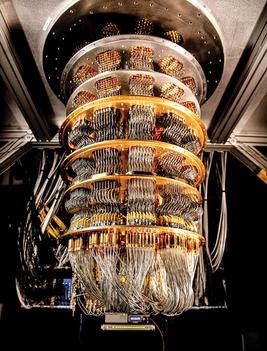
Our research at CIAFF focuses on:
Multipartite entanglement for superconducting-circuits quantum technologies
One of the most promising physical systems as an architecture for the development of new quantum technologies are superconducting circuits. Superconducting quantum systems allow not only to reproduce results and phenomena of Quantum Optics and Quantum Information obtained in other physical platforms, but also to reach experimental regimes which go beyond. Notable examples are the dynamical Casimir effect and the creation of three photons by Spontaneous Parametric Downconversion (SPDC). We explore their practical applications and their theoretical consequences for the classification and measurement of multipartite entanglement, both in qubit systems and with microwave photons. The idea is to develop specific protocols that serve to efficiently integrate these resources into realistic and useful technologies, for example, a quantum computer or a boson sampling system.
Quantum simulation of quantum field theories and nuclear models
We want to exploit the rapid development of quantum computing experimental setups to propose their use as quantum simulators, both analog and digital, of Quantum Field Theory models, both in flat and curved spacetime.
One aim is to use them to explore open questions and theoretical frontiers, such as the relationship between quantum physics and gravity. The final goal is to realize experimental digital quantum simulations of a quantum gravitational field -graviton- and its interaction with quantum matter and the electromagnetic quantum field. This includes the use of modern error mitigation techniques, in which a classical post-processing of the quantum experimental data based on machine learning techniques allows correcting the results without the use of expensive sophisticate quantum error correction codes, enabling accurate predictions of quantum observables and states even with the current Noisy Intermediate-Scale Quantum (NISQ) devices. Together with the digital developments, a complementary CIAFF line of research focuses on analogue quantum simulators, in which modern quantum setups can be tailored to mimic specific models of interest, such as for instance quantum field theory in curved spacetime.
Quantum computers can be employed for the simulation of nuclear physics models in order to realize computations of interest for the nuclear physics community, which eventually would in principle overcome the limitations of the current classical machines. Also, quantum technologies can be employed in studies of quantum correlations such as entanglement and discord in nuclear physics phenomena.
